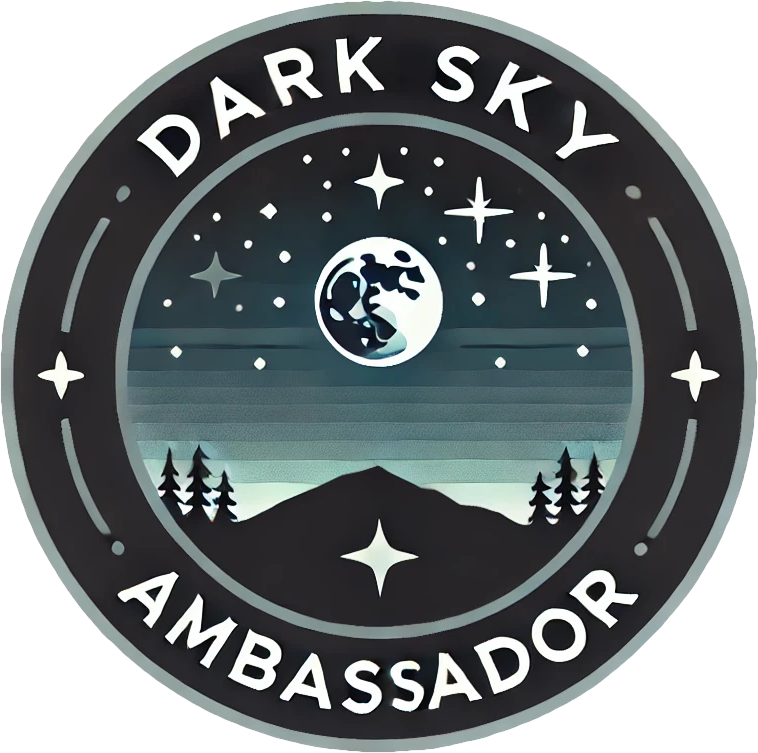The Impact of Blue Light at Night and the Benefits of Warm Lighting
Abstract
Artificial lighting has revolutionized the way we live, but it also comes with hidden costs, particularly when it comes to the health impacts of blue light at night. This whitepaper explores the harmful effects of blue light on human health, the environment, and astronomical observations. It will discuss the science behind blue light exposure, its detrimental impacts on sleep and eye health, and the broader implications for light pollution and wildlife. Finally, this paper highlights the benefits of warm lighting and provides actionable recommendations to mitigate the risks of blue light exposure, both indoors and outdoors.
Introduction
In recent years, the increasing prevalence of blue light—emitted by LED lighting, electronic screens, and urban lighting—has raised concerns about its effects on human health and the environment. While blue light plays an essential role in regulating circadian rhythms during daylight hours, exposure to it at night can lead to sleep disruptions, eye strain, and long-term health risks. Additionally, blue light pollution contributes to the degradation of dark skies, negatively impacting astronomy and wildlife.
This whitepaper will present the science behind blue light, explore its negative effects on health and the environment, and offer strategies for using warm lighting to reduce these risks.
Understanding Blue Light
What is Blue Light?
Blue light is a portion of the visible light spectrum with short wavelengths (415–480 nanometers) and higher energy output. It is naturally present in sunlight and plays a crucial role during the day in enhancing alertness, cognitive function, and mood. However, its prevalence in artificial lighting, particularly from LEDs, screens, and electronic devices, has raised concerns about its effect on health when overexposed at night.
Blue Light’s Role in Circadian Rhythms
Our bodies are wired to respond to the natural progression of light throughout the day. In the morning and early afternoon, blue light exposure helps regulate circadian rhythms by stimulating the production of cortisol and suppressing melatonin, a hormone that induces sleep. However, as the day progresses and light begins to dim, the brain receives signals to increase melatonin production, which prepares the body for sleep. Prolonged exposure to blue light in the evening disrupts this process, tricking the brain into thinking it’s still daytime.
Health Impacts of Blue Light Exposure at Night
Sleep Disruption
Exposure to blue light during the evening hours has been shown to interfere with the body’s ability to fall asleep. A study from Harvard Medical School found that blue light suppressed melatonin production for twice as long as green light of comparable brightness. This delay in melatonin production can shift circadian rhythms by several hours, making it difficult to fall asleep and resulting in poor sleep quality.
Chronic sleep disruption is linked to a wide range of health problems, including:
- Increased risk of obesity
- Cardiovascular diseases
- Impaired immune function
- Mood disorders such as anxiety and depression
Eye Strain and Potential Damage
Blue light is also a contributor to digital eye strain, particularly in individuals who spend extended periods in front of screens. Common symptoms include dry eyes, blurred vision, and headaches. Additionally, overexposure to blue light may accelerate age-related macular degeneration (AMD), a leading cause of vision loss in older adults.
Mental Health and Cognitive Function
The disruption of sleep due to blue light exposure also negatively affects mental health. Poor-quality sleep can exacerbate symptoms of anxiety, depression, and other mood disorders. Cognitive functions such as memory, learning, and decision-making are impaired when individuals do not receive adequate rest, resulting in diminished workplace performance and overall well-being.
Environmental Impact: Blue Light and Dark Skies
Light Pollution and Skyglow
In addition to its effects on human health, blue light contributes significantly to light pollution, particularly in urban areas. Blue-rich light sources, such as streetlights and billboards, scatter more easily in the atmosphere, resulting in “skyglow.” Skyglow obscures the night sky and makes it difficult for astronomers and casual stargazers to observe celestial bodies. Even in rural areas, distant sources of blue light can interfere with astronomy.
Impact on Wildlife
Many species, including nocturnal animals and migratory birds, rely on natural cycles of darkness and light for navigation and survival. The introduction of artificial blue light disrupts these cycles. For example, migratory birds and sea turtles are often drawn toward brightly lit areas, leading to fatal disorientation. Warm-toned lighting, with a colour temperature below 3000K, causes less disruption to wildlife and reduces negative ecological impacts.
The Dark Sky Movement
The International Dark-Sky Association (IDA) has been at the forefront of efforts to reduce light pollution. The organization advocates for using outdoor lighting that is dim, shielded, and warmer in colour temperature (less than 3000K). Dark sky reserves, which are areas with minimal light pollution, have been established around the world to protect astronomical observations and promote ecological sustainability.
The Benefits of Warm Lighting
Warm Lighting and Sleep
Unlike blue light, warm lighting—characterized by lower colour temperatures (under 3000K)—does not interfere with melatonin production, allowing the body’s natural circadian rhythm to remain intact. Using warm lighting in the evening can help reduce the time it takes to fall asleep and improve overall sleep quality.
Reduced Eye Strain
Warm light is gentler on the eyes, making it a more comfortable choice for nighttime reading or relaxation. It reduces digital eye strain and minimizes the risk of long-term vision problems such as macular degeneration.
Environmentally Friendly Lighting
Warm lighting is less likely to scatter in the atmosphere and contribute to skyglow, making it more environmentally friendly. Using warm lighting in outdoor spaces, particularly in areas surrounding nature reserves or dark sky parks, helps preserve the beauty of the night sky and minimizes ecological disruptions.
Strategies for Reducing Blue Light Exposure
To minimize the negative effects of blue light at night, here are practical steps for households, communities, and organizations:
- Install Warm-Toned Lighting: Use bulbs with colour temperatures below 3000K in living spaces and outdoor areas. Soft amber or yellow lighting creates a relaxing atmosphere while promoting better sleep.
- Use “Night Mode” on Devices: Most modern electronic devices now have a “night mode” that reduces blue light emissions. Activating this setting in the evening shifts the screen colour to warmer tones, helping reduce the impact on your sleep.
- Limit Screen Time Before Bed: Reducing screen exposure at least an hour before sleep can help the body transition more smoothly into rest. Opt for non-screen activities like reading a book or meditating in a dimly lit environment.
- Install Shielded Outdoor Lighting: Communities and households should consider shielded outdoor lighting that directs light downward, reducing skyglow and light spill into neighboring areas.
Conclusion
The widespread use of blue light in modern technology and urban lighting has led to unintended consequences for human health, the environment, and astronomy. Prolonged exposure to blue light at night disrupts sleep, contributes to eye strain, and poses risks to mental health. Additionally, blue-rich lighting is a major contributor to light pollution, threatening wildlife and diminishing the visibility of stars in the night sky.
Switching to warm lighting not only improves sleep and eye health but also reduces the environmental impact of artificial lighting. By adopting practices that limit blue light exposure and opting for warm-toned lighting solutions, individuals and communities can promote healthier living environments and preserve the beauty of the night sky for future generations.
References
- Harvard Health Publishing. (2018). Blue light has a dark side. source Harvard Health
- The American Macular Degeneration Foundation (AMDF). Blue Light and Your Eyes. source AMDF
- National Sleep Foundation. Blue Light and Sleep. source Sleep Foundation
- International Dark-Sky Association. (2021). Light Pollution and its Effects on Wildlife and Ecosystems. source IDA
- Lucas, R. et al. (2014). “Measuring and using light in the melanopsin age.” Trends in Neurosciences.


